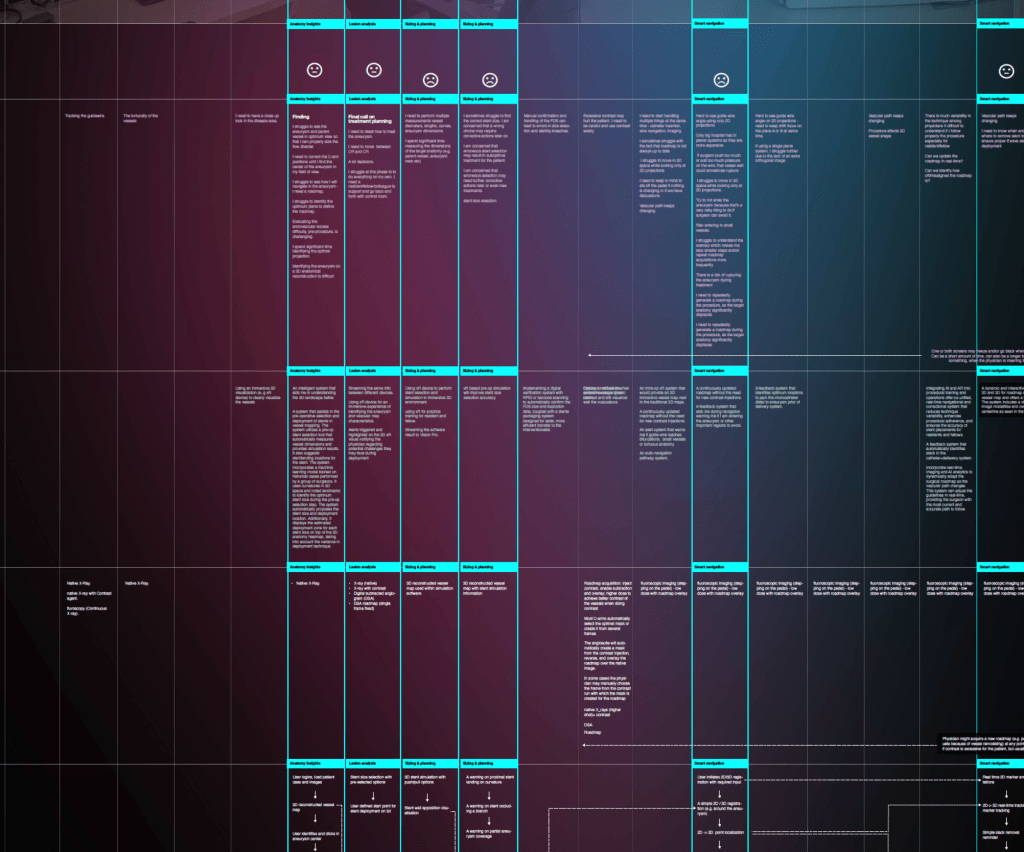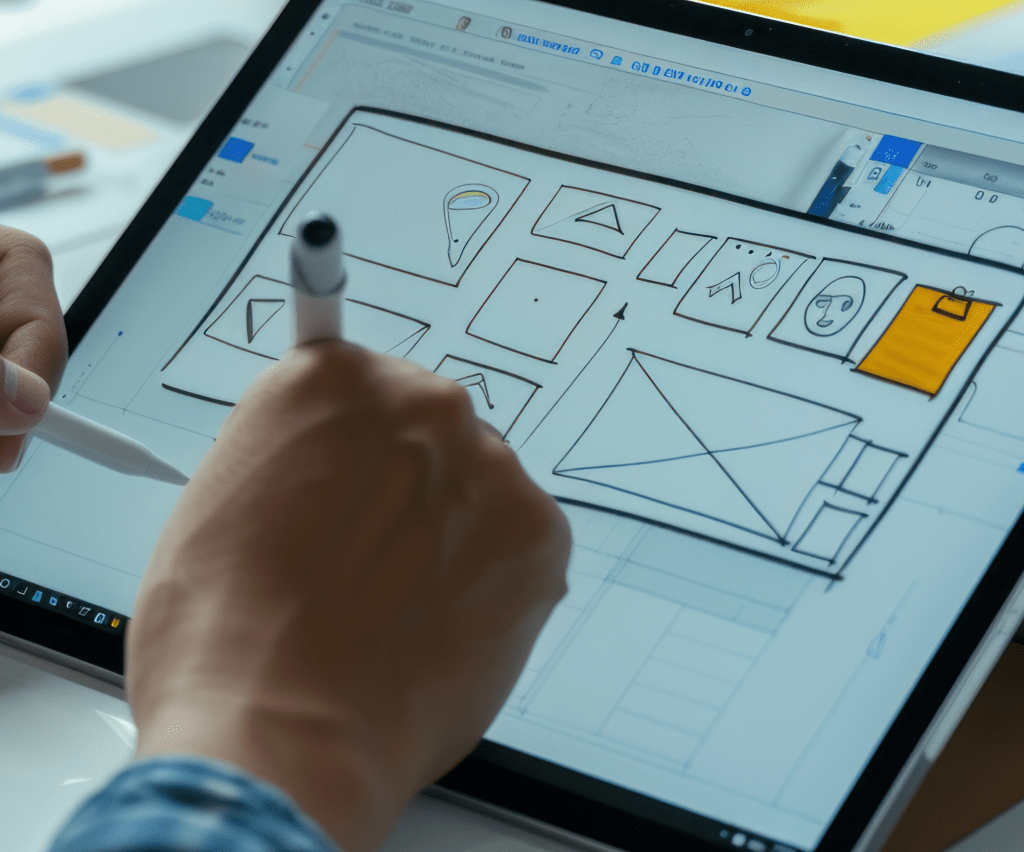Project overview

I worked on a medical planning and assistance application designed for surgeons performing complex interventions. The goal was to support surgical workflow from pre-operative planning through intraoperative guidance. By streamlining planning and offering real-time support during operations, I aimed to reduce surgeons’ cognitive load and improve both efficiency and safety in high-stakes procedures.
Role & Scope
I served as the sole Product Designer, collaborating with engineers, product managers, and medical experts. Over several months, I guided the project from concept through prototyping, leading research, experience design, and usability testing. My focus was on making sure the solution delivered clear, actionable information and integrated smoothly into existing surgical practices.
Design Process

Research & Personas
I began by interviewing internal clinical experts to understand how surgeons plan and execute procedures. From these insights, I created a surgeon persona that represented their goals, frustrations, and context. This helped me empathize with end users and keep the design centered on their real needs.

Journey Mapping
I mapped the surgeon’s journey step by step to surface pain points—like fragmented information, communication delays, and cognitive overload—and identified opportunities for improvement. These pain points directly shaped the project’s MVP.

Defining the MVP
I distilled opportunities into core features: a unified dashboard for critical patient data, real-time notifications for key updates, a task management tool for tracking follow-ups, and structured handover summaries. Each feature was chosen to directly address a specific pain point.

Sketching & Wireframes
I sketched early concepts to explore layouts and information hierarchy, then created wireframes that emphasized clarity and rapid scanning. I iterated with internal experts to refine flow and structure before moving into high fidelity.

Visual Design & Prototype
I translated the wireframes into high-fidelity designs that balanced readability with a professional medical aesthetic. In parallel, I built an interactive prototype so that workflows could be tested in realistic scenarios.

Testing & Iteration
I tested the prototype with both surgeons and internal experts. Their feedback confirmed that features like the unified dashboard and task management tool solved the intended pain points. I refined the design by simplifying navigation and adjusting alert behaviors to reduce overload.
Feedbacks

Direct user engagement in labs and Q&As has been invaluable, confirming the impact of our innovations.
“I’m really impressed! The exciting features are truly beneficial during procedures.” – A persona user
“Overall, majority of the physician audience either “strongly agreed” or “agreed” that they would use this application if it was available today.” –
A feedback from the conference survey
Outcome
The project resulted in a validated prototype of the medical planning and assistance application. Surgeons who evaluated it reported that it improved their preparation and increased confidence during procedures. Internal experts highlighted that it reduced task overload and consolidated scattered information into one view. The final design demonstrated how a user-centered process—grounded in research, journey mapping, and iterative testing—can create a solution that meaningfully supports complex surgical workflows.
Due to the project being ongoing and confidential, this is a trimmed-down version of the project overview.
